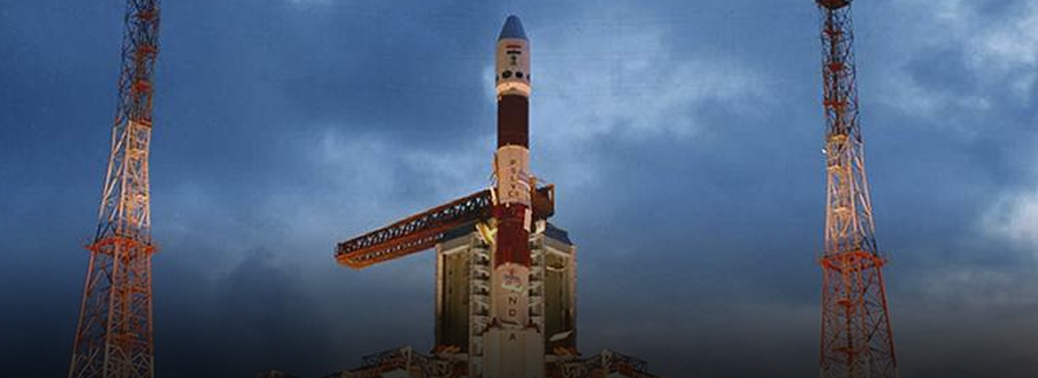Chandrayan – 2
23, Aug 2018

Prelims level : Space
Mains level :
- India’s second mission to the Moon is a totally indigenous mission comprising of an Orbiter, Lander and Rover.
- The payloads will collect scientific information on lunar topography, mineralogy, elemental abundance, lunar exosphere and signatures of hydroxyl and water-ice.
- Chandrayaan-2 will be ISRO’s first time attempt to land a rover, on the Moon. The rover, will be made to land near the yet-unexplored south pole of the moon.
- It is also ISRO’s first mission to land on any celestial body.
Orbiter:
- The orbiter is physically similar to Chandrayaan-1.
- It is three-axis stabilized with reaction wheels.
- The orbiter carries five science instruments and two supporting instruments.
Terrain Mapping Camera 2 (TMC-2):
- It will perform 3D mapping of the lunar surface using two cameras.
Collimated Large Array Soft X-ray Spectrometer (CLASS):
- It will map abundance of major rock-forming elements on the Moon including Mg, Al, Si, Ca, Ti, and Fe.
- Assisting it is the Solar X-ray Monitor (XSM), which measures solar x-ray emission.
Chandra’s Atmospheric Composition Explorer(ChACE-2)
- It is a neutral mass spectrometer that is based upon CHACE
Synthetic Aperture Radar (SAR)
- It will perform radar mapping of the surface in both L and S bands of the radio spectrum.
- It has heritage from MiniSAR on Chandrayaan-1 but will be the first L-band radar mapper to orbit the Moon.
Imaging Infra-Red Spectrometer (IIRS)
- It is sensitive to light with wavelengths between 0.8 and 5 microns and has the specific goal of mapping the abundance of hydroxl ions and molecular water.
Orbiter High Resolution Camera (OHRC):
- It will perform high-resolution imaging of the landing site prior to the lander mission.
Lander:
- The lander will have a throttleable engine for performing a soft landing.
- A special radar altimeter will help the Lander orient itself while it lands on the moon surface safely.
Rover:
- The rover has been designed in such a way that it will have the power to spend a lunar day or 14 Earth days on the moon’s surface and walk up to 150-200 metres.
- It will do several experiments and on-site chemical analysis of the surface.
- The rover will then send data and images of the lunar surface back to the Earth through the orbiter within 15 minutes.
- After spending 14 earth days, the rover will go into sleep mode.
- ISRO is hopeful that the rover will again come alive whenever that part of the moon (where the rover will land) gets sunlight and recharges the rover’s solar cells.
Significance of Moon:
- Scientists and space planners have long acknowledged that extended human residence on the Moon would be greatly aided by the use of local resources.
- Lunar soil could be used for shielding habitats against the radiation environment.
- More advanced uses of lunar resources are clearly possible, but how advantageous they would be is presently unknown.
- Most lunar rocks are about 40 percent oxygen, and chemical and electrochemical methods for extracting it have been demonstrated in laboratories.
- The solar windhas implanted hydrogen, helium, and other elements in the surfaces of fine grains of lunar soil. Though their amounts are small they constitute about 100 parts per million in the soil they may someday serve as a resource.
- Helium-3, a helium isotope that is rare on Earth and that has been deposited on the Moon by the solar wind, has been proposed as a fuel for nuclear fusion reactors in the future.
- One natural resource uniquely available on the Moon is its polar environment. Water molecules are found in their strongest concentrations at the lunar poles.
Chandrayan – I
- The first Indian planetary mission to moon, Chandrayaan-1 with a suite of Indian
- And International payloads on board, collected very significant data over its mission duration of close to one year.
- This mission was a huge success.
- The observations made by Chandrayan – 1 are as follows
- Discovery of hydroxyl (-OH ) and water molecule in sunlit lunar surface region around the poles
- exposure of large anorthositic blocks confirming the global lunar magma hypothesis
- signature of sub surface ice layers in permanently shadowed regions near the lunar north pole evidence for a new refractory rock type
- mapping of reflected lunar neutral atoms and identification of mini-magnetosphere
- mapping of reflected lunar neutral atoms and identification of mini-magnetosphere
- preserved lava tube that may provide site for future human habitation.






